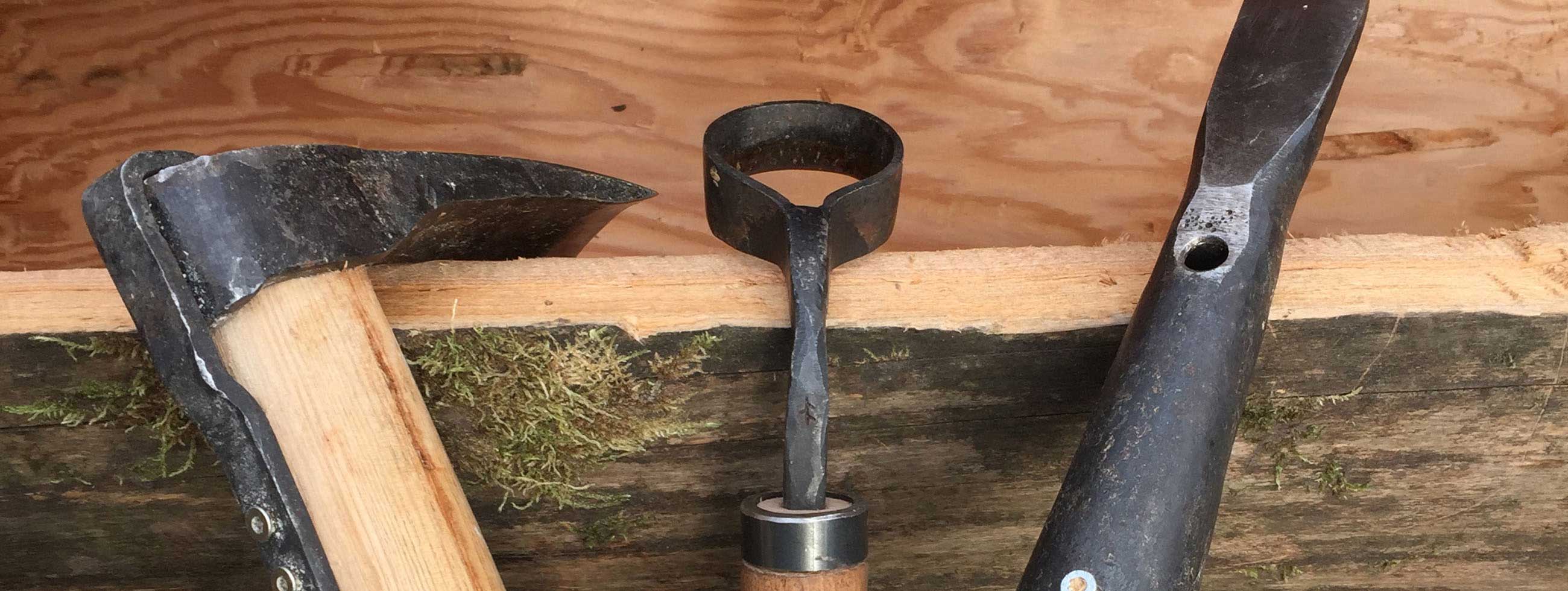
TREE BEEKEEPING
The history of tree beekeeping
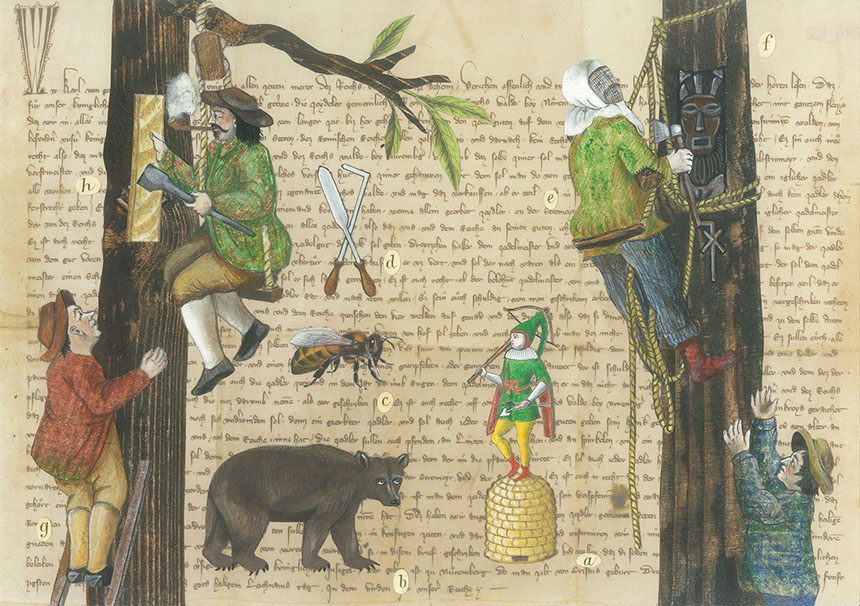
Stone age people – as well as nature people of today – had been collecting honey of wild bees. But they did or do not do this profesionally. The tree-beekeepers, whose profession can be dated back to the Early Age, collected the honey of wild, half-wild or domesticated bees in the forests. They did not keep the bees in timbered bee-hives but in natural nesting sites in trees (artificial caves/hives).
Privileged status of tree-beekeepers
It is interesting that this privilege (right of the tree-beekeepers) has never been cancelled, not even by the reformation of the Weimar Republic. Thus it is still valid today. You can find some jurisdictional traces of this privilege nowadays in Civil Law Code with its paragraphs regarding bees.
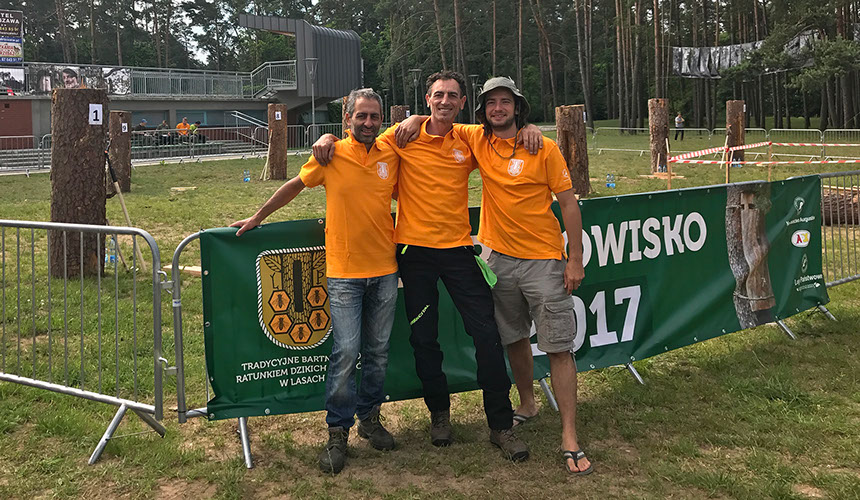
The Comeback
Antonio Gurliaccio, member of BIENENBOTSCHAFT: Education as tree-beekeeper in summer 2015 at a workshop at a centre in Ballenberg, Switzerland. He expanded his professional knowledge in 2016 at a tree-beekeeper competition “Barciowisko”, an event of the forestry office Augustow, Poland.
In 2017 he even achieved the first rank with his colleague Florian Kuttner during the International Competition.
PDF – WWF History of tree-beekeeping in Poland
PDF – WWF Return of tree-beekeeping in Poland
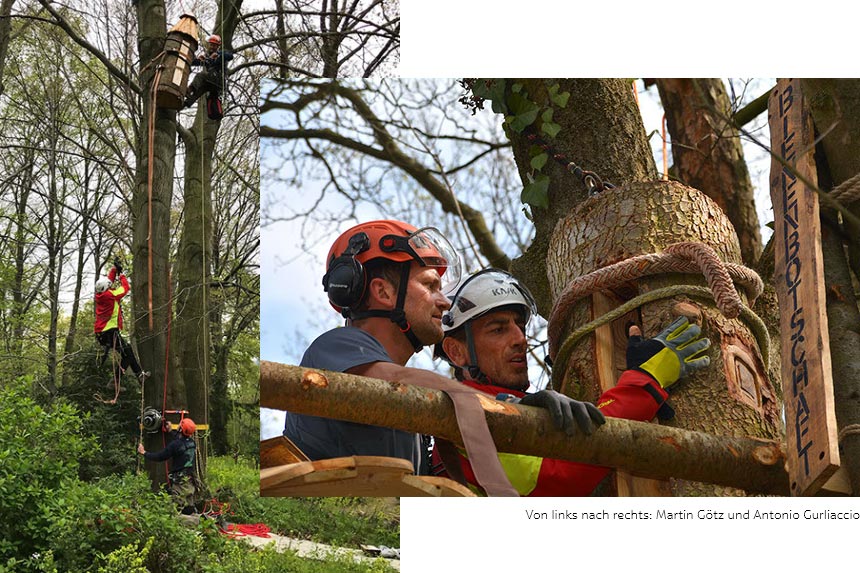
Modern tree-beekeeping
According to the scientific research work of the well-known honey bee scientist and beekeeper Thomas D. Seeley, these natural homes support swarm intelligence, genetics, natural selection as well as Varroa tolerance for wild living bee populations. We see a big chance in our pioneer work for a healthy and thus flourishing future of our actually threatened honey bee. And if the bee is doing well, the nature and human being is also doing well. We are proud to be a creative power of this path.
Our book recommendations
Bienendemokratie (Honeybee Democracy) by Thomas D. Seeley
“The Most Captivating Science Book of the Year.” – Financial Times
Auf der Spur der wilden Bienen (Following the wild bees, The craft and science of bee hunting) by Thomas D. Seeley
Die Honigfabrik (The Honey Factory: Inside the Ingenious World of Bees) by Prof. Dr. Jürgen Tautz
Handlungsanleitung für artgerechte Bienenhaltung mit Pseudoskorpionen (Guidance for species-appropriate beekeeping with pseudo-scorpions) by Torben Schiffer
Locations our log hives
Log hives supervised by local bee keepers
In planning
Log hive workshop 2020
natural habeetat *tree
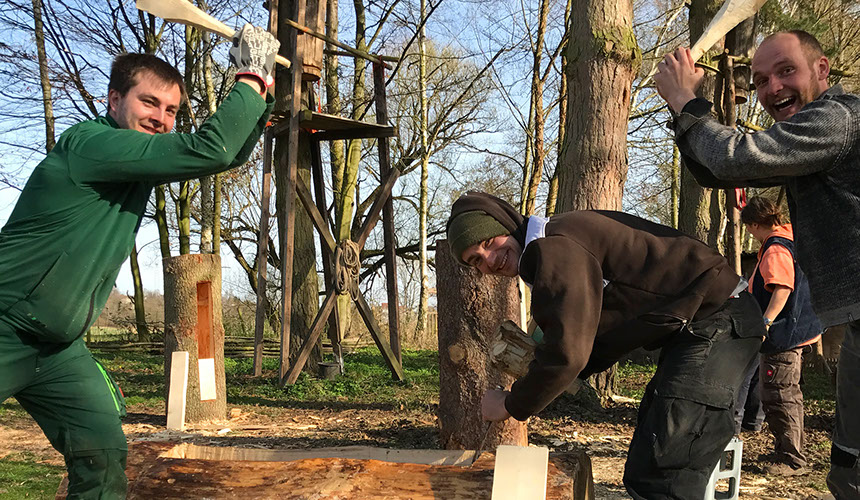
Log hive workshop according to Zeidler Art / natural habeetat * tree 2020
Whether as a gift or if you want to swing the saw yourself: in 2020 you will again have the opportunity to register for one of our log hive workshops in the BEE EBASSY. Together with you, we manufacturelog hives in the Zeidler style. Modified according to the latest scientific studies by Torben Shiffer (beenature-project) & Prof. Dr. Jürgen Tautz (Hobos). You can take your completed natural habeetat * tree with you at the end of the course. We look forward to you!
I. Workshop Spring: April 17 and 18, 2020
II.Workshop Summer: August 21 and 22, 2020
Log-hive workshop -TreeBeeKeeping B3
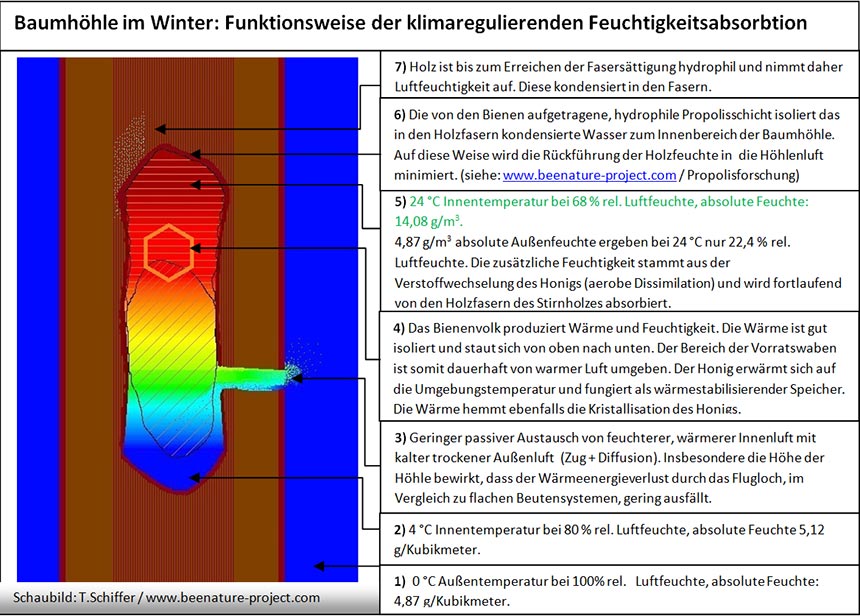
BIENENBOTSCHAFT is cooperation partner of HOBOS, Prof. Dr. Jürgen Tautz University of Würzburg with the Ext. Employees Department: Science & Research Torben Schiffer, and based on the latest research results, builds the evolved log loot according to “Zeidler Art B3” TreeBeekeeping B3 – The most natural habitat for a healthy future for our honeybee! If you are interested or have questions, please contact us!




